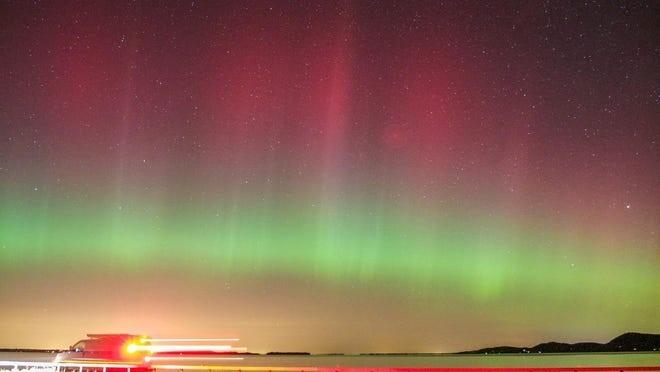For many of us who live up and across the northern United States, TONIGHT and tomorrow we might be able to see something very exciting - the Northern Lights, or the Aurora Borealis!
Quick lesson:
What is an Aurora?
This is sometimes referred to as polar lights, northern lights or southern lights. It is an amazing natural light display in the sky that typically happens at high-latitudes (northern and southern areas of the earth). What we see looks like swirling hues of color in the sky that could be red, green, purple, or blue.
What causes an aurora?
What it comes from is energy from the sun. When a solar wind (solar meaning from the sun) travels through a magnetic field in space and enters the Earth’s atmosphere we get these amazing lights. This “solar wind” is different than the normal light we get from the sun that warms us up and lights up our day. The solar wind carries little building blocks (protons and electrons) that when stuck together create and carry a huge amount of energy from the sun.
When this solar wind that is carry all of the tiny building blocks (protons and electrons) hits Earth’s magnetic field, this field pushes the solar wind away. The solar wind is so strong that it combines with the magnetic field and moves with the magnetic field away from the middle of the earth but to the north and south poles. This movement releases energy which creates the northern lights that we see.
Sometimes this solar wind is strong and you get bright and vibrate colors and other times it is weaker and the colors aren’t as bright.
Why are the lights different colors?
The primary color that is seen is typically green, and part of that is that our human eye can recognize green more readily than other colors.
The main reason that the northern lights can be different colors is due to where the lights are seen and how high up in the sky they are. Another factor is how much energy they are carrying and how excited the little building blocks are getting moving along the magnetic field.
Where do I look?
Since the solar wind is moving to the poles with the magnetic field we want to look NORTH tonight. You also want to be in a dark area where there isn’t a lot of ambient light, aka light from buildings, cars, houses, street lamp etc.
Here's a great video from 2013 of the Northern Lights over Mallet Bay:
Video: Dan Russell
Other sources on the Northern Lights:
What causes the northern lights? https://theconversation.com/curious-kids-what-causes-the-northern-lights-111573
Seeing the northern lights tonight: https://www.forbes.com/sites/valeriestimac/2020/12/09/the-northern-lights-may-glow-across-the-us-tonight--tomorrow--heres-where--how-to-see-them/?sh=33d8a3b31aef
Local forecast/where the best views will be: https://www.burlingtonfreepress.com/story/news/2020/12/10/aurora-boreali...





